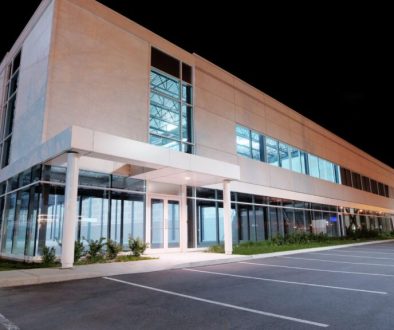The Benefits of Multi-Tenant Retail Centers
The Benefits of Multi-Tenant Retail Centers
Multi-tenant retail centers have become an increasingly popular choice for both consumers and investors. This article delves into the numerous advantages of these dynamic shopping environments, exploring their flexibility, cost-effectiveness, and impact on local economies.
The Benefits of Multi-Tenant Retail Centers
Multi-tenant retail centers are a vital component of the modern shopping landscape, showcasing a diverse array of stores under one roof. Their significance extends beyond mere convenience; they offer a multitude of benefits that can positively impact both consumers and business owners. In this blog post, we will explore the advantages of multi-tenant retail centers, including their economic viability, customer attraction strategies, operational efficiencies, and community contributions. By the end of this article, you will have a comprehensive understanding of why multi-tenant retail centers continue to thrive and how they can be a boon for businesses and communities alike.
Understanding Multi-Tenant Retail Centers
Multi-tenant retail centers, often referred to as shopping centers or strip malls, consist of multiple retail businesses operating in a shared space. They can range from small neighborhood centers hosting a few stores to large shopping complexes with numerous tenants. One of the main advantages of these centers is their ability to cater to a diverse range of consumer needs, providing everything from grocery stores to restaurants, boutiques, and service providers.
The design of multi-tenant retail centers typically emphasizes accessibility and convenience. They are often strategically located near residential areas, making them a go-to destination for everyday shopping and leisure activities. The co-location of various businesses within these centers not only enhances consumer choice but also fosters an engaging shopping experience.
Economic Viability of Multi-Tenant Retail Centers
One of the most significant benefits of multi-tenant retail centers is their economic viability. For property owners and investors, these centers offer a stable revenue stream as they can house multiple tenants simultaneously. This diversification reduces the financial risk associated with relying on a single business, making it a more attractive investment option. Here are some key points related to the economic advantages:
- Reduced Vacancy Risk: With several tenants in one location, the likelihood of sustained profitability increases. If one tenant vacates, the impact on overall revenue is mitigated, as other tenants continue to generate income.
- Shared Operating Costs: Multi-tenant centers benefit from shared utilities, maintenance, and marketing expenses. This cost-sharing model makes it more affordable for individual businesses to operate, allowing them to focus on growth and customer service.
- Increased Foot Traffic: The combination of various retailers attracts a larger customer base. This foot traffic not only benefits the individual tenants but also increases the overall visibility and appeal of the center.
- Long-Term Stability: Long-term leases with tenants provide predictable cash flow for property owners, making it easier to secure financing and investment for future projects.
Customer Attraction Strategies
Multi-tenant retail centers are designed to maximize customer attraction through several strategies that enhance the shopping experience. A diverse mix of tenants provides consumers with a one-stop shopping solution, drawing them back time and again. Here are some strategies employed by successful multi-tenant retail centers:
- Variety of Offerings: By hosting a blend of retail, dining, and service providers, these centers cater to a wide demographic, appealing to families, young adults, and seniors. This variety keeps the shopping experience fresh and engaging.
- Community Events and Promotions: Many retail centers organize community events such as seasonal festivals, farmers’ markets, or holiday celebrations to engage the local population. These events draw in foot traffic and foster a sense of community.
- Convenient Amenities: Providing ample parking, easy access, and additional amenities like Wi-Fi and seating areas enhances the customer experience. These conveniences encourage longer visits and increased spending.
- Active Marketing and Branding: Multi-tenant centers often engage in collaborative marketing efforts, promoting the entire center rather than just individual stores. This unified approach helps create a recognizable brand and encourages loyalty.
Operational Efficiencies and Synergies
Multi-tenant retail centers offer unique operational efficiencies that benefit both property owners and tenants. One significant advantage is the synergies created by tenants who complement each other. For instance, a coffee shop located near a bookstore can attract more customers to both businesses. Here are some operational efficiencies to consider:
- Simplified Management: Managing multiple tenants in one location streamlines property management tasks. Property managers can coordinate maintenance and marketing efforts across all tenants, improving overall efficiency.
- Increased Collaboration: Tenants often collaborate on promotions or events, leveraging each other’s customer bases for mutual benefit. This teamwork can lead to innovative marketing strategies and shared successes.
- Flexibility in Space Usage: Multi-tenant centers can adapt to changing market trends by easily reconfiguring spaces. If a tenant vacates, property managers can quickly fill the space with complementary businesses, ensuring continued profitability.
- Sustainability Initiatives: Many multi-tenant retail centers are adopting sustainable practices, such as energy-efficient lighting and waste reduction programs. These initiatives not only lower operational costs but also appeal to environmentally conscious consumers.
Community Impact of Multi-Tenant Retail Centers
Beyond economic benefits, multi-tenant retail centers play a crucial role in shaping local communities. They can create jobs, promote local entrepreneurship, and serve as community hubs. Here’s how these centers contribute to the community:
- Job Creation: Multi-tenant retail centers generate employment opportunities, both within the retail businesses and in ancillary services such as maintenance, security, and management.
- Support for Local Businesses: Many multi-tenant centers prioritize leasing to local businesses, fostering a sense of community and supporting the local economy. This practice also adds unique flavor to the shopping experience, differentiating them from larger chain stores.
- Social Interaction Spaces: These centers often serve as gathering places where community members can socialize, attend events, and engage in recreational activities. This social aspect enhances community cohesion and quality of life.
- Investment in Infrastructure: The development of multi-tenant retail centers often leads to improvements in local infrastructure, including better roads, public transit access, and enhanced public spaces, benefiting the entire community.
Best Practices for Successful Multi-Tenant Retail Centers
To maximize the benefits of multi-tenant retail centers, property owners and managers should consider the following best practices:
- Curate a Diverse Tenant Mix: Ensure a balance of different retail categories to attract a broad customer base while avoiding direct competition among tenants.
- Engage with the Community: Actively involve the local community in events and promotions, fostering a sense of ownership and loyalty towards the retail center.
- Implement Flexible Lease Structures: Offer flexible lease terms that cater to a variety of tenant needs, encouraging startups and established businesses alike to consider leasing space.
- Focus on Customer Experience: Regularly seek feedback from tenants and customers to enhance the shopping experience. Utilize this feedback to make informed decisions on improvements and changes.
- Leverage Technology: Use data analytics to understand customer preferences and shopping patterns, allowing for targeted marketing and tenant mix adjustments.
The Future of Multi-Tenant Retail Centers
As consumer behaviors evolve, so too will multi-tenant retail centers. The rise of e-commerce has impacted traditional retail, but multi-tenant centers are adapting by integrating technology and improving customer experiences. Here are some trends likely to shape the future of multi-tenant retail centers:
- Experiential Retail: Offering unique experiences, such as live demonstrations, workshops, or entertainment options, will become more prevalent in attracting customers back to brick-and-mortar stores.
- Technology Integration: Advances in technology, from mobile ordering to augmented reality shopping experiences, will enhance the convenience and enjoyment of in-person shopping.
- Health and Wellness Focus: Retail centers may increasingly incorporate health and wellness-focused tenants, such as fitness studios, organic cafes, and wellness boutiques, to cater to the growing consumer demand for healthier lifestyles.
- Sustainability Initiatives: As consumers become more environmentally aware, multi-tenant retail centers will likely prioritize sustainable practices and eco-friendly tenants to align with customer values.
Conclusion
In conclusion, multi-tenant retail centers offer a plethora of benefits for businesses and communities alike. Their economic viability, customer attraction strategies, operational efficiencies, and positive community impact make them a cornerstone of modern retail. As these centers continue to evolve in response to changing consumer behaviors and market trends, they will remain vital in shaping the future of shopping experiences. For those looking to invest in or manage a retail space, the advantages of multi-tenant centers are clear and compelling. Explore your options and discover the potential of multi-tenant retail centers today!



